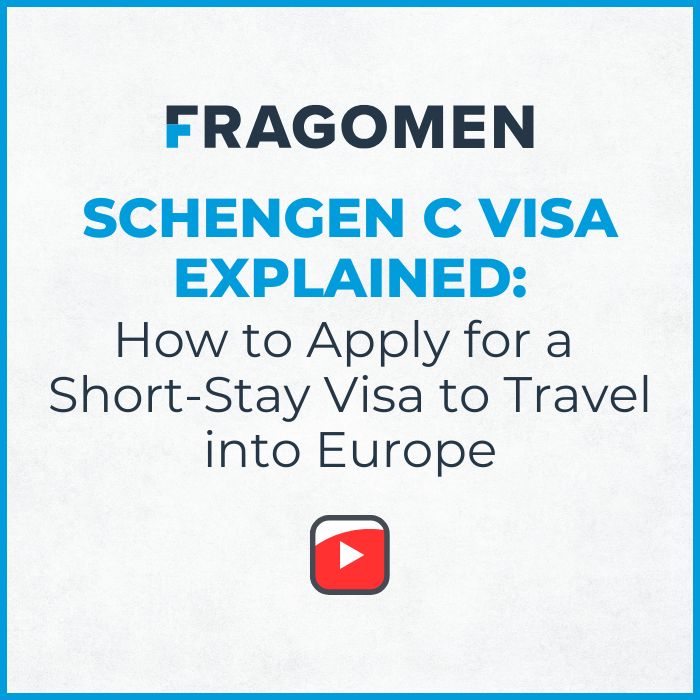Navigating the Uptick in Internal Border Checks: Is the EU’s Free Movement at Risk?
November 8, 2024
By: Andreia Florina Ghimis, Elisabeth Kamm
Travelling across Europe without internal border checks is a considered a major achievement of collaboration between European countries. In a recent Eurobarometer survey, more than four in five EU companies agreed that the Schengen Area benefits business in their country and is one of the EU's main accomplishments.
The temporary reintroduction of Schengen internal border checks is nothing new. However, in recent weeks, Germany, Norway, Denmark, France and Sweden have announced new internal border checks starting in November, raising concerns about the future of free travel within Schengen. Newly announced controls often build on previously implemented measures in these countries and add to existing controls in Austria, Italy and Slovenia.
What does this mean for businesses and travellers in Europe?
The most immediate impact for businesses and individuals of internal Schengen checks is likely to be delays. Border checks for identity and travel documents take time, which may result in train delays or traffic jams. Therefore, it is a good idea to plan for potential disruptions. For businesses, this can result in increased costs due to longer travel times for cross-border commuters or frequent business travellers.
Additionally, all travellers must ensure they have the correct documentation readily available for border guards. While EU citizens can travel based on their ID cards, non-EU nationals must ensure they have their valid passports with them even if they hold a residence permit issued by an EU country, as the latter is not considered a valid travel document.
However, it is important to note that these border checks do not mean every traveller will be inspected each time they cross a border. The checks are often limited to specific land, air or sea borders between two countries, and authorities may not inspect every individual. For instance, they may opt to check one train in three rather than every single one.
Individuals in specific situations, such as those who legally hold the temporary protection status but whose permits have expired, or family members of EU citizens exercising extended free movement rights, may also need to explain their circumstances. Having supporting documents on hand can be crucial in such cases to clarify and justify their legal status and exemptions they benefit from.
For those traveling without valid travel document authorization, such as individuals with expired Schengen visas, invalid residence permits or visa-exempt nationals who have overstayed the allowed 90/180-day limit, these checks increase the risk of detection and sanctions. Business and leisure travellers alike have the ability to check that they comply as the primary aim of these controls is to identify such irregularities.
Are these internal border checks legal?
Internal border controls are, in principle, not allowed within the Schengen Area. However, EU countries can legally reintroduce such checks for specific reasons, key among them being serious threats to public policy or internal security. This is not a new development; internal checks have been reintroduced occasionally for many years. However, when doing so, Schengen countries must follow certain rules.
First, the reintroduction of border controls should be a last-resort measure, used only in exceptional situations, and must be proportionate to the perceived threat. Second, these measures are always temporary and must have a clearly defined end date. The length of time they are permitted depends on the reason for their introduction.
Although the European Commission can request detailed explanations from countries and voice concerns, as it did during the EU Council meeting in mid-October, it does not have the authority to veto a Member State’s decision to reintroduce internal border controls.
Is Europe’s “Free Movement” truly at risk?
The principle of free movement in Europe encompasses far more than traveling in the area without being subject to border checks. Thanks to this right, EU citizens can travel, live AND work in any other EU or Schengen country with minimal administrative procedures. Often, these rights extend to family members as well.
Businesses benefit from reduced trade, transport, and immigration costs, enhancing Europe’s attractiveness as a business hub. A well-functioning Schengen Area boosts competitiveness, with recent Eurobarometer data showing that three in four European businesses rely on this advantage and focus their operations within the zone.
Temporary and proportionate internal border checks do not threaten the principle of free movement per se. As long as they remain limited in time and justified, they are explicitly foreseen to ensure the security of those living or travelling through the area.
In fact, since a recent revision of the Schengen Border Code, guidelines for their temporary use have been clarified and checks now explicitly allow countries to also respond to other types of crises, such as health crises like the COVID-19 pandemic.
The concern arises when countries continuously extend these internal checks, particularly if the initial reason for which they were introduced no longer stands.
Hampering the freedom to travel within the Schengen Area could, on the long-term, affect the unity of the EU and undermine its attractiveness for businesses. Consequently, Europe may see its economic growth and capacity to attract investments also diminished.
Businesses should continue emphasising with policymakers the added value that the Schengen free travel area brings and advocate for sound policy decisions striking the right balance between business goals and security needs.
Need to know more?
Please reach out to the Fragomen Consulting Europe team at [email protected] with queries on the Schengen Area and immigration considerations.
This blog was published on 8 November 2024, and due to the circumstances, there are frequent changes. To keep up to date with all the latest updates on global immigration, please subscribe to our alerts and follow us on LinkedIn, X, Facebook and Instagram.















